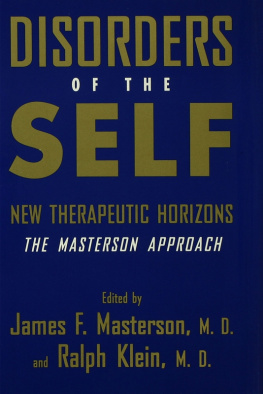AN ARABIAN ADVENTURE
AN ARABIAN
ADVENTURE
A Dream Achieved
Gifford S. Rossi
First published in 1993 by
Kegan Paul International
This edition first published in 2009 by Routledge
2 Park Square, Milton Park, Abingdon, Oxon, OX14 4RN
Simultaneously published in the USA and Canada
by Routledge
270 Madison Avenue, New York, NY 10016
Routledge is an imprint ofthe Tuylor & Francis Group, an informa business
Gifford S. Rossi 1995
Transferred to Digital Printing 2009
All rights reserved. No part of this book may be reprinted or reproduced or utilised in any form or by any electronic, mechanical, or other means, now known or hereafter invented, including photocopying and recording, or in any information storage or retrieval system, without permission in writing from the publishers.
British Library Cataloguing in Publication Data
A catalogue record for this book is available from the British Library
ISBN 10: 0-7103-0327-3 (hbk)
ISBN 13: 978-0-7103-0527-5 (hbk)
Publishers Note
The publisher has gone to great lengths to ensure the quality of this reprint but points out that some imperfections in the original copies may be apparent. The publisher has made every effort to contact original copyright holders and would welcome correspondence from those they have been unable to trace.
LIST OF PLATES
| 1. |
| 2. |
| 3. |
| 4. |
| 5. |
| 6. |
| 7. |
| 8. |
| 9. |
| 10. |
| 11. |
| 12. |
| 13. |
| 14. |
| 15. |
| 16. |
| 17. |
| 18. |
| 19. |
| 20. |
| 21. |
| 22. |
| 23. |
| 24. |
| 25. |
| 26. |
| 27. |
| 28. |
| 29. |
| 30. |
| 31. |
| 32. |
| 33. |
| 34. |
| 35. |
| 36. |
| 37. |
| 38. |
| 39. |
| 40. |
| 41. |
| 42. |
FOREWORD
This book is published posthumously at my husbands request. Gifford S. Rossi died on 7 August 1994 and I undertook the task to fulfil his wish, reliving what he once described as the most exciting adventure of our life.
There are passages here that for some readers will be difficult to follow owing to the complexity of the deal, but I hope that, on the whole, it will succeed in presenting a moment that was interesting and captivating in the history of our relationship with the Arab world.
I would like to extend my thanks to all the Arab friends and associates who were of great help in the realization of what, at times, seemed almost an impossible project: (in alphabetical order) The Amir of Bahrain, His Highness Sheikh Isa Bin Sulman Al Khalifa; His Excellency Sheikh Khalifa bin Sulman Al-Khalifa; His Excellency Mr. Yousuf Al-Shirawi, His Excellency Dr. Abdulhady H. Taher; His Excellency Sheikh Ahmed Zaki Yamani.
I am especially indebted to Jack Hartshorn, Giffords oldest and most constant friend, for assisting and encouraging me at the moment that was the most difficult and saddest of my whole life.
I must acknowledge with gratitude Sylvia Cape, our secretary for many years, for having been immensely helpful and without whose patience this book would not have been possible.
My thanks also go to Peter Hopkins of Kegan Paul International, who was so positively receptive from the beginning.
Marcella Rossi
February 1995
To Marcella
without whose love, encouragement, partnership and loyalty this dream may have never come true
INTRODUCTION
In June 1967 the Arab/Israeli war succeeded in closing the Suez Canal in such a devastating way that many experts were predicting that it would never reopen. It was blocked by sunken ships, crumbled banks, dozens of tanks and a good deal of bad feeling on both sides. The oil industry had an unobstructed run to Japan from the Persian Gulf, but insufficient ships to deliver all the oil required by Western consumers. This was due to the fact that tankers of up to 65,000 dead-weight tonnage (DWT), which heretofore had been transitting the Suez Canal to the Persian Gulf, now had to make the much longer voyage around the Cape of Good Hope to collect and deliver oil to Europe and the Western Hemisphere. Many more ships were needed to deliver the same quantity of oil over a much greater distance. What added to the shortfall was that the demand for oil was increasing as industry converted to oil from coal-fired furnaces and boilers. The demand for petrol was also increasing, with more and more motor cars on the road.
The ever-resourceful ship-owning community found a solution a much larger tanker, highly automated, requiring the same number of crew, which could carry three to four times more oil around the Cape than the older, smaller ships. Other operating costs pro rata per barrel of oil would be less than for the smaller ships. If the Suez Canal was ever reopened, they would be too big to pass through it. Nevertheless, they would be able to transport a barrel of oil more economically, even by the longer route, than any vessel able to transit the Canal.
The Canal had a record of disrupting the shipping and oil markets, being closed by war twice during a twelve-year period. These big, new ships would make the oil industry completely independent of the Suez Canal. Their size would be 200,000 DWT and upwards, and the class of vessel would be known as VLCCs (very large crude carriers).
Shipyards world-wide were not busy and shipowners rushed to place orders for the big new class of vessel. By 1968 the first VLCCs began to appear, and in 1969 there were about 60 of these giants in service. It was rumoured that Japan was gearing itself to produce about 40 VLCCs per year, and the shipping market was forecasting that a balance would be achieved between shipping capacity and oil demand when 700 VLCCs would be in service, possibly by 1974. Many adjustments had to be made at loading terminals and discharge ports to accommodate the big ships. Another problem of which the shipping press commented was that there were far too few dry docks to service this size vessel, and absolutely none between South-west Europe and Japan. Then disaster struck. Three VLCCs suffered major damage from explosion during one month in 1969.
On 12 December the Marpessa, a 206,805 DWT tanker owned by the Shell Group, sunk on her second voyage from damage caused by an explosion.
On 29 December the Mactra, over 200,000 DWT and also Shell owned, survived an explosion and was towed into Durban for partial repairs alongside as no dry dock of sufficient size existed. A 500-foot gash was torn in the vessels hull and two crew members were killed. It was estimated at the time that 700 tons of steel would be required to strengthen her for towage to repair in Europe.






